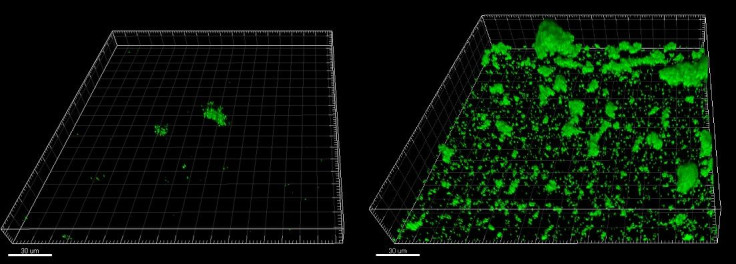Amino Acid Could Prevent Tooth Decay By Wiping Out Destructive Biofilms

A common amino acid found naturally in red meat, poultry, fish, and certain dairy products, may help rid people’s teeth of destructive biofilms that cause poor oral health, a new study finds.
Published in PLOS ONE, the study found L-arginine wiped out the same disease-causing plaques found on teeth that can cause cavities and gum disease. While normally reserved for oral health care products that target tooth sensitivity, scientists believe the new research suggests L-arginine could also serve as an ingredient in toothpastes and mouthwash for overall protection.
“Dental plaque is a biofilm,” said Alexander Rickard, assistant professor of epidemiology at the University of Michigan School of Public Health, in a statement. “Biofilms account for more than 50 percent of all hospital infections” and also contribute “to the billions of dollars of dental treatments and office visits every year in the United States.”
Rickard and his colleagues conducted a simple study in which they observed how common oral bacteria flourished among one group of saliva samples, which hadn’t been supplemented with L-arginine, and how it handled another group that had. Both samples were kept at 98.6 degrees.

They found substantial disintegration of bacteria in the L-arginine group, suggesting a possible benefit to putting it in consumer health products. According to the data on worldwide cavity prevalence, the upside of such an addition could be huge. In 2013, scientists looking at 20 years of data discovered a full third of the global population had untreated cavities, adding up to an average health loss of 224 years for every 100,000 people.
The biggest threat to people with poor oral health is periodontitis, said Nick Jakubovics, a lecturer at Newcastle University's School of Dental Sciences and co-author of the study. Between 10 and 15 percent of Americans experience advanced forms of periodontitis, leading to loose teeth or outright tooth loss. “Therefore,” said Jakubovics, “there is a clear need for better methods to control dental plaque.”
It isn’t clear to Rickard and his team why L-arginine succeeds so handily in eliminating bacteria. They suspect the mechanism may involve the amino acid preventing the cells in the bacteria from sticking together. Once loosened, they can no longer adhere to the surface of the tooth and cause the enamel to erode.
In future tests, the team hopes to broaden their scope of investigation and eventually move out of the cell model. Focusing on live subjects would let them track the real-time effects of prolonged L-arginine exposure and potentially even develop uses for the amino acid outside oral health care, they wrote in their report, including “other environments such as in wounds, catheters, and other medically or environmentally relevant situations.”
Source: Kolderman E, Bettampadi D, Samarian D, et al. L-Arginine Destabilizes Oral Multi-Species Biofilm Communities Developed in Human Saliva. PLOS ONE. 2015.
Published by Medicaldaily.com



























